A Successful Dolphin Rescue Near Marco Island
Earlier this month, Florida’s Fish and Wildlife Conservation Commission (FWC) received 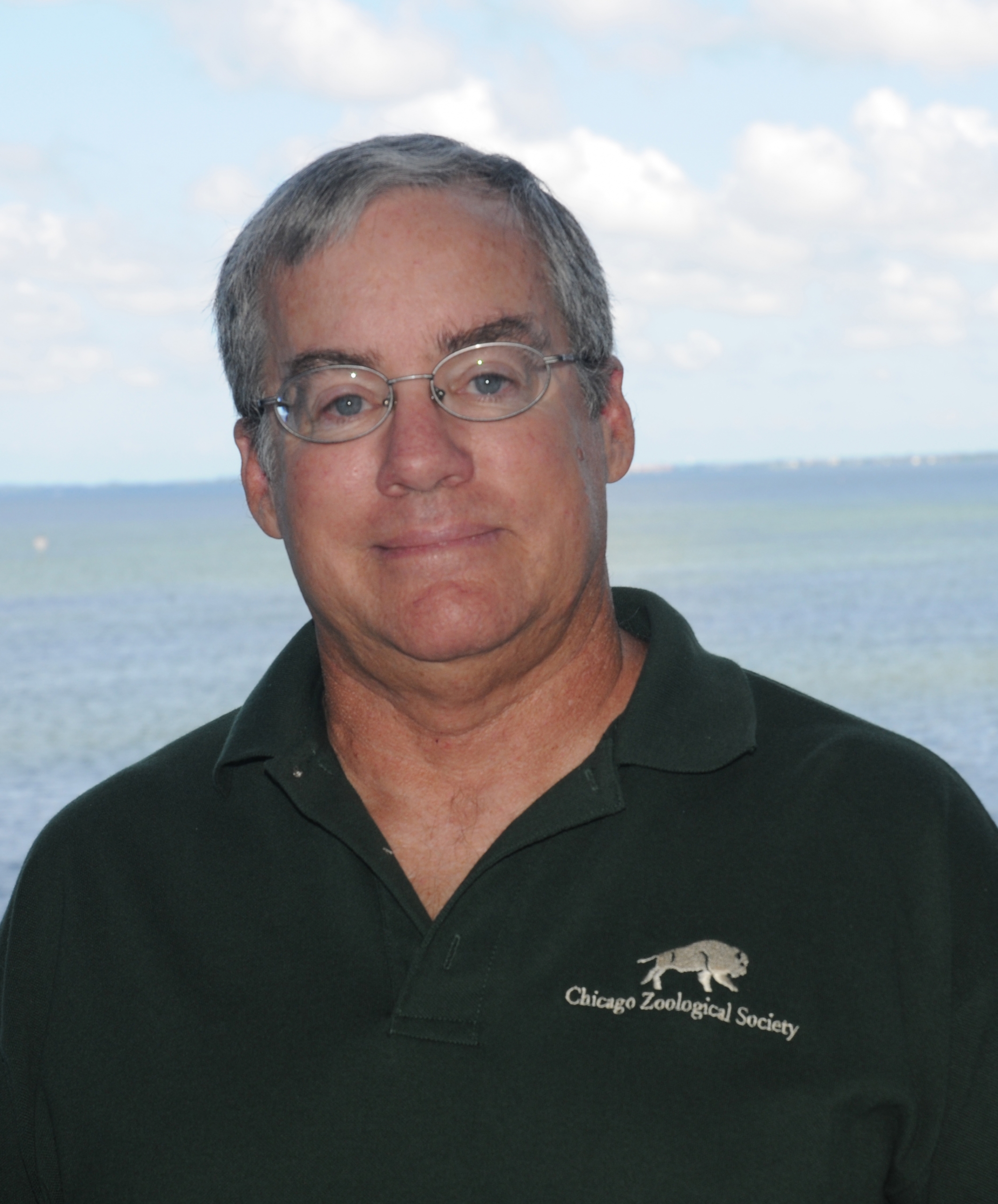 several reports from the Naples/Marco Island area about a calf whose tail flukes were entangled in fishing line. After determining that the entanglement was life threatening, the National Marine Fisheries Service (NMFS) asked us to lead a rescue operation to remove the fishing gear and save the calf’s life.
several reports from the Naples/Marco Island area about a calf whose tail flukes were entangled in fishing line. After determining that the entanglement was life threatening, the National Marine Fisheries Service (NMFS) asked us to lead a rescue operation to remove the fishing gear and save the calf’s life.
On April 25, we gathered a team of 49 people on nine boats and met on Marco Island to attempt the rescue. At 8 a.m. FWC set off in search of the calf and its mom and found them feeding along seawalls at Isle of Capri in Capri Pass by 10 a.m. — though in water too dangerous to attempt the rescue. The team continued to observe the dolphins until about 12:30, when the pair entered an area shallow enough to allow the team to attempt the rescue.

The dolphins were corralled and examined. The male calf, known as Fergie, had line cutting deeply into the leading edge of his tail flukes. The team’s veterinarian removed the line, cleaned the wounds and administered a long-acting antibiotic.
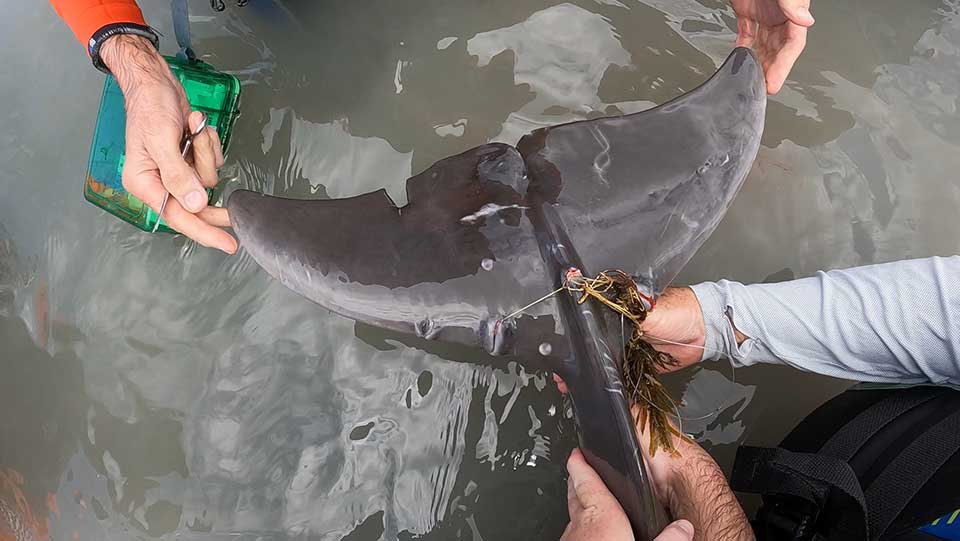
Fergie’s entanglement.
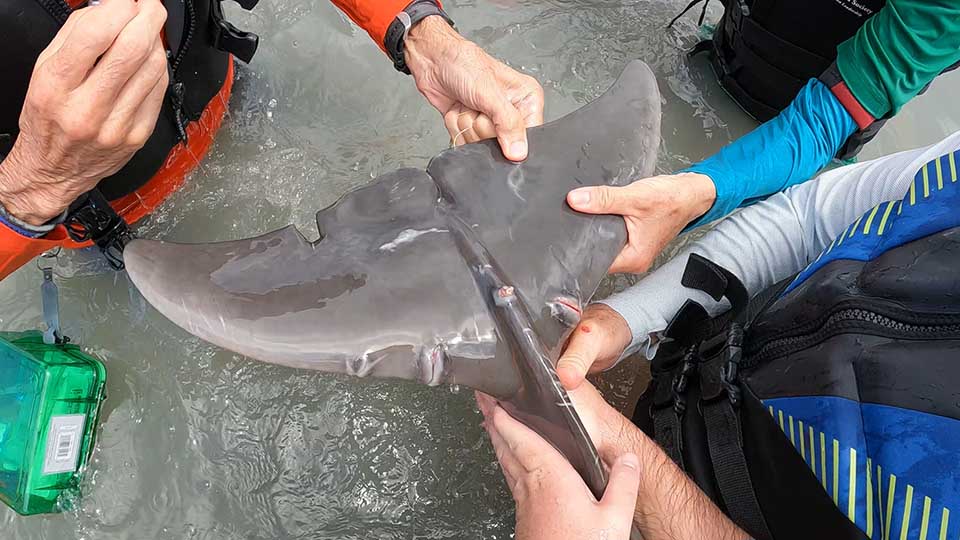
Fishing gear removed.
The team also examined the calf’s mom — a dolphin named Skipper that we had rescued from her own entanglement on Sept. 4, 2014. Today, her wounds are well-healed.
Sadly, this maternal lineage has an even wider history with entanglement than just mom and calf. Skipper’s brother Seymour was rescued from entanglement in fishing gear in 2012 and Skipper’s niece, Arial, was reported to be entangled with fishing line around her dorsal fin in January 2019. We sent a team to undertake a remote gear removal operation, but Arial was fortunately able to shed the gear on her own prior to our arrival.
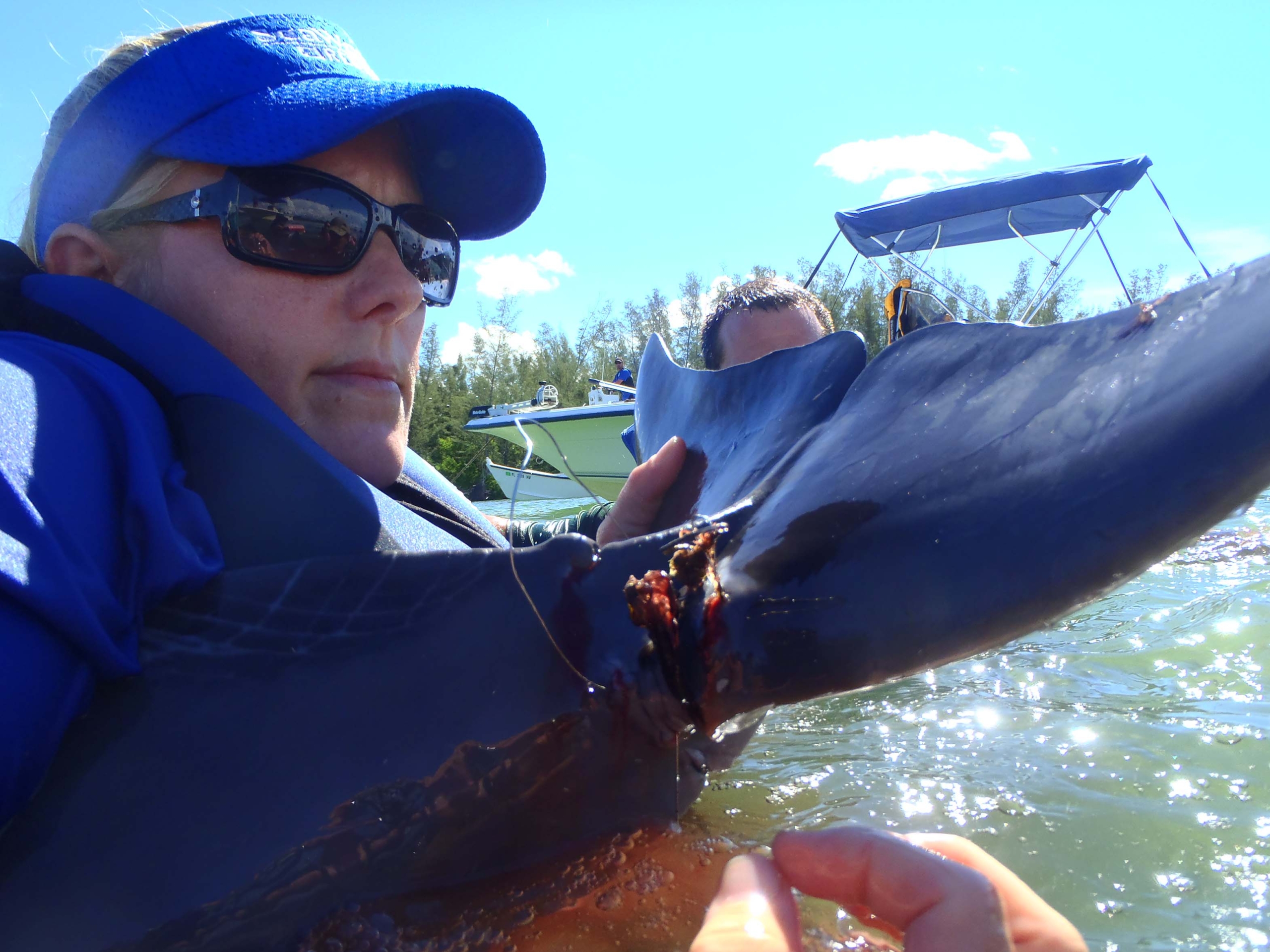
Skipper’s 2014 entanglement.
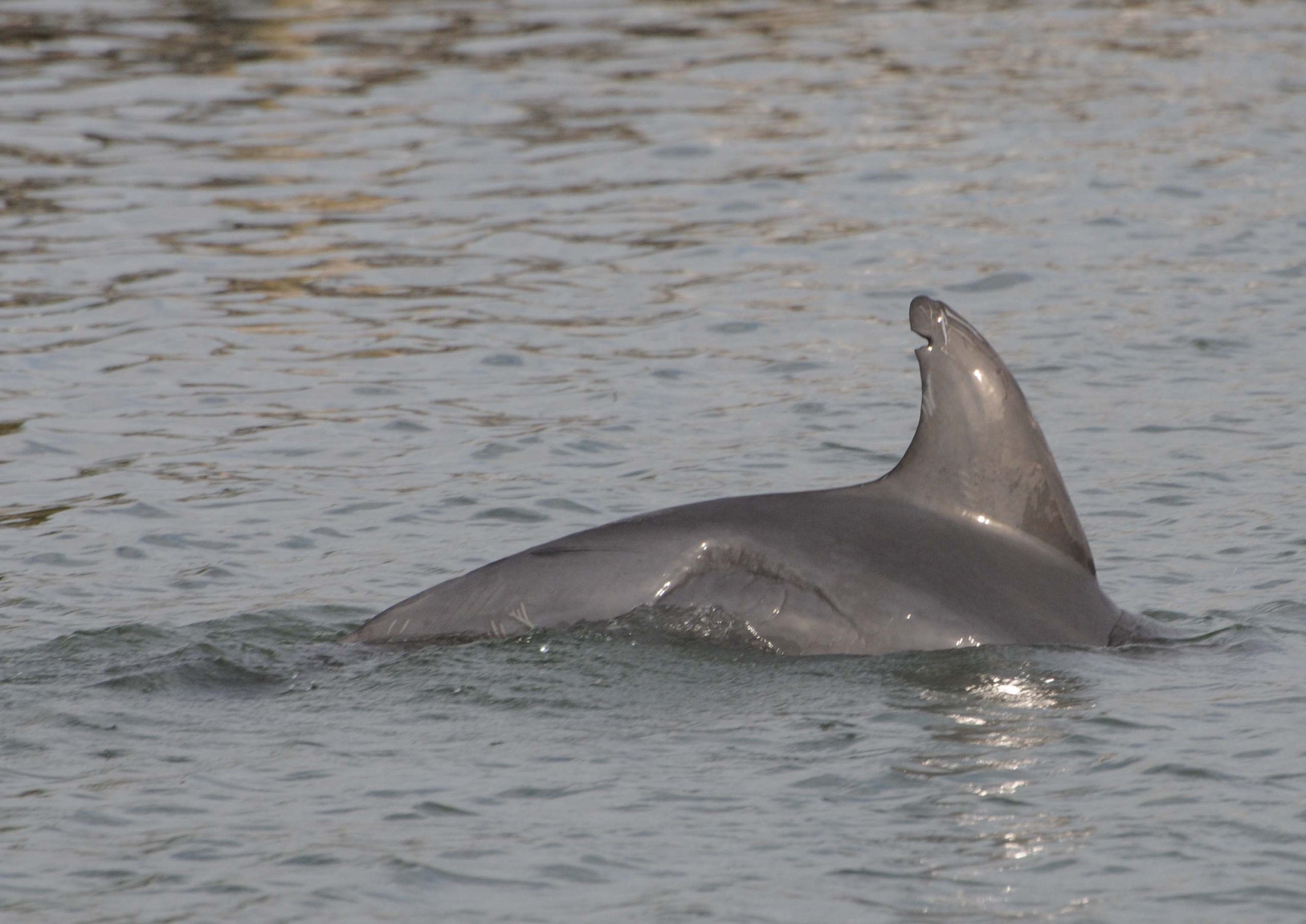
Skipper’s shark bite wound in 2017.
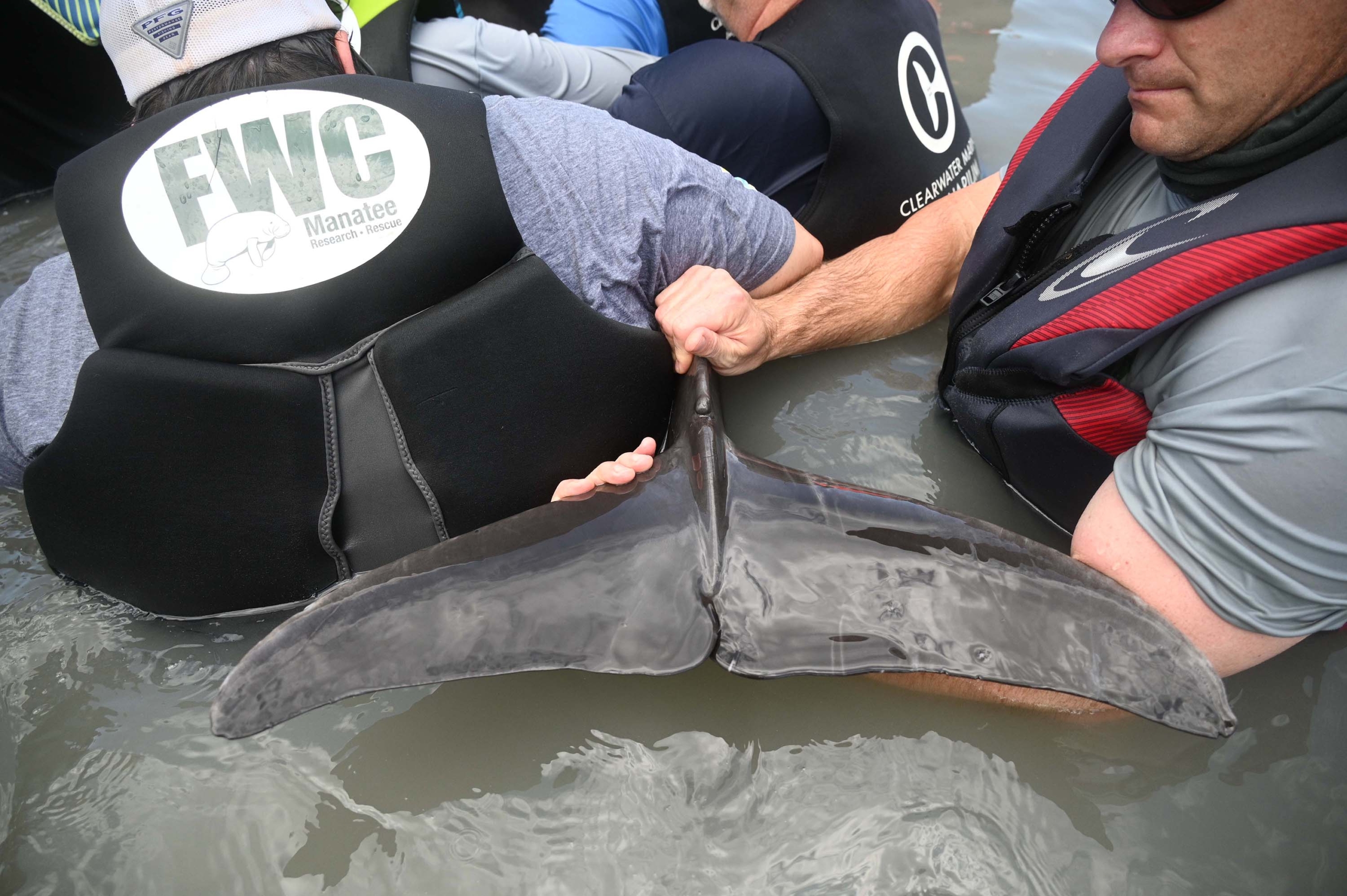
Skipper’s tail flukes and peduncle in April 2023.
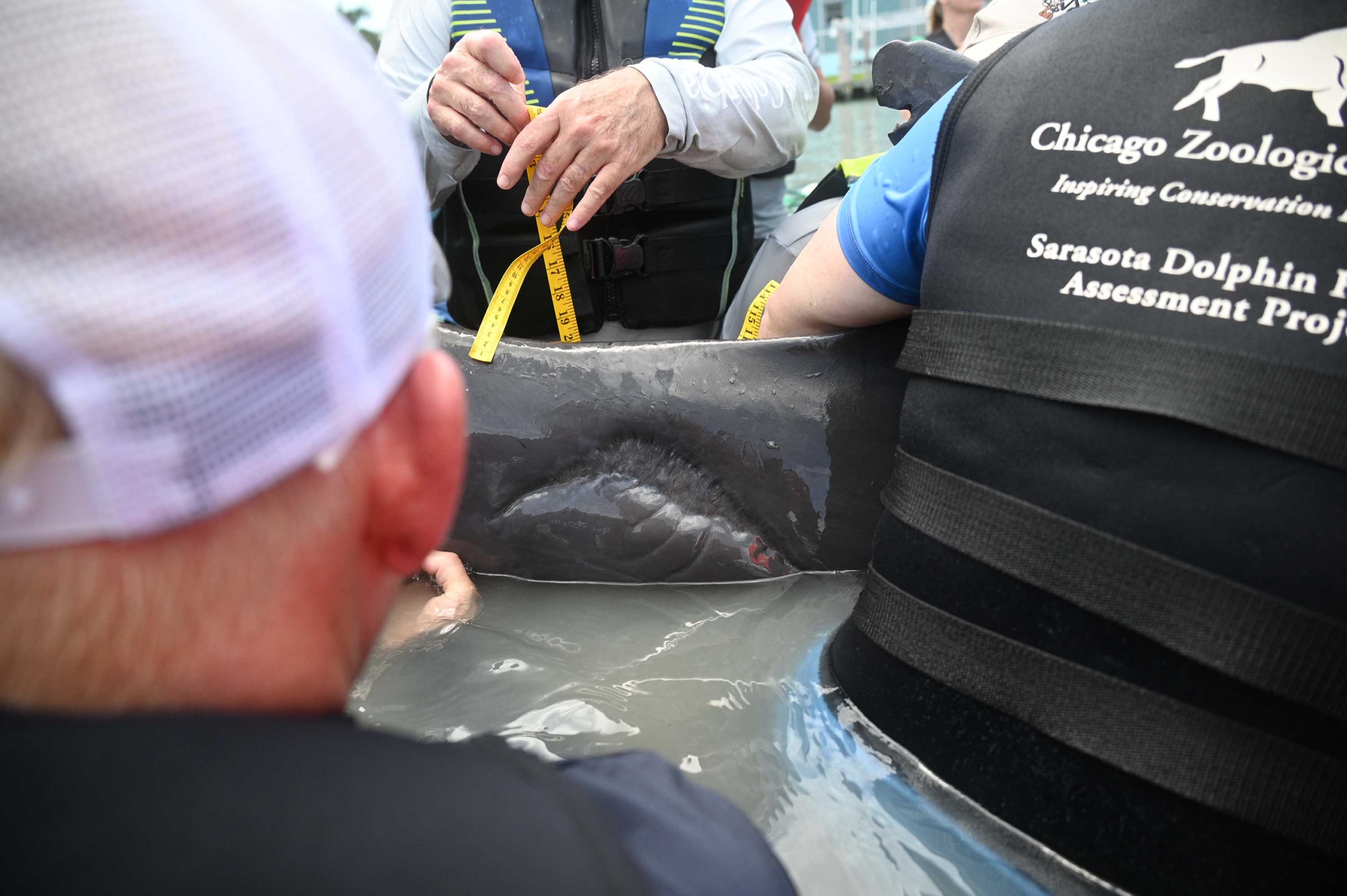
Skipper’s shark bite wound in April 2023.
While we’re pleased that we have been able to help this family of dolphins — and that our research has shown the value of undertaking rescues of animals suffering from human-induced injuries — we sure wish that we didn’t have to take these measures at all.
The good news is that we can all help prevent these injuries. If you’re an angler, please:
- Avoid using braided line — in our experience, it stays in the environment longer than regular monofilament line and has that much more potential to harm marine life. It’s also razor sharp when entangled around a dolphin and loaded with barnacles.
- Please make sure your tackle and gear are in good shape and won’t easily break off.
- If you do break your line or catch the mangroves (we’ve all been there) please be sure to motor or pole to the mangroves to remove it. Even if it’s too high for a dolphin to become entangled, we don’t want to catch birds either.
- Please stow used line where it cannot blow out of your boat when you’re underway. An old tennis ball can (or even a Pringles container) works great.
- Please view our pages on dolphin-safe fishing and dolphin-safe boating.
Here’s wishing you fair winds, following seas and the dolphins an entanglement-free environment.
Randy Wells
Rescues Take a Team Effort
Mounting a dolphin rescue like the one we just completed with Fergie truly takes a team effort. A special thanks go to all the organizations and agencies that helped by sending people and/or resources to support this rescue. We’re fortunate to be able to work together with such great team members for the good of the dolphins.
- FWC’s Southwest Field Lab
- FWC’s Marine Mammal Pathobiology Lab
- Mote Marine Laboratory’s Stranding Investigations Program
- Clearwater Marine Aquarium
- University of Florida College of Veterinary Medicine
- SeaWorld of Orlando
- Harbor Branch Oceanographic Institution
- Rookery Bay National Estuarine Research Reserve
- Collier County Sheriff’s Office
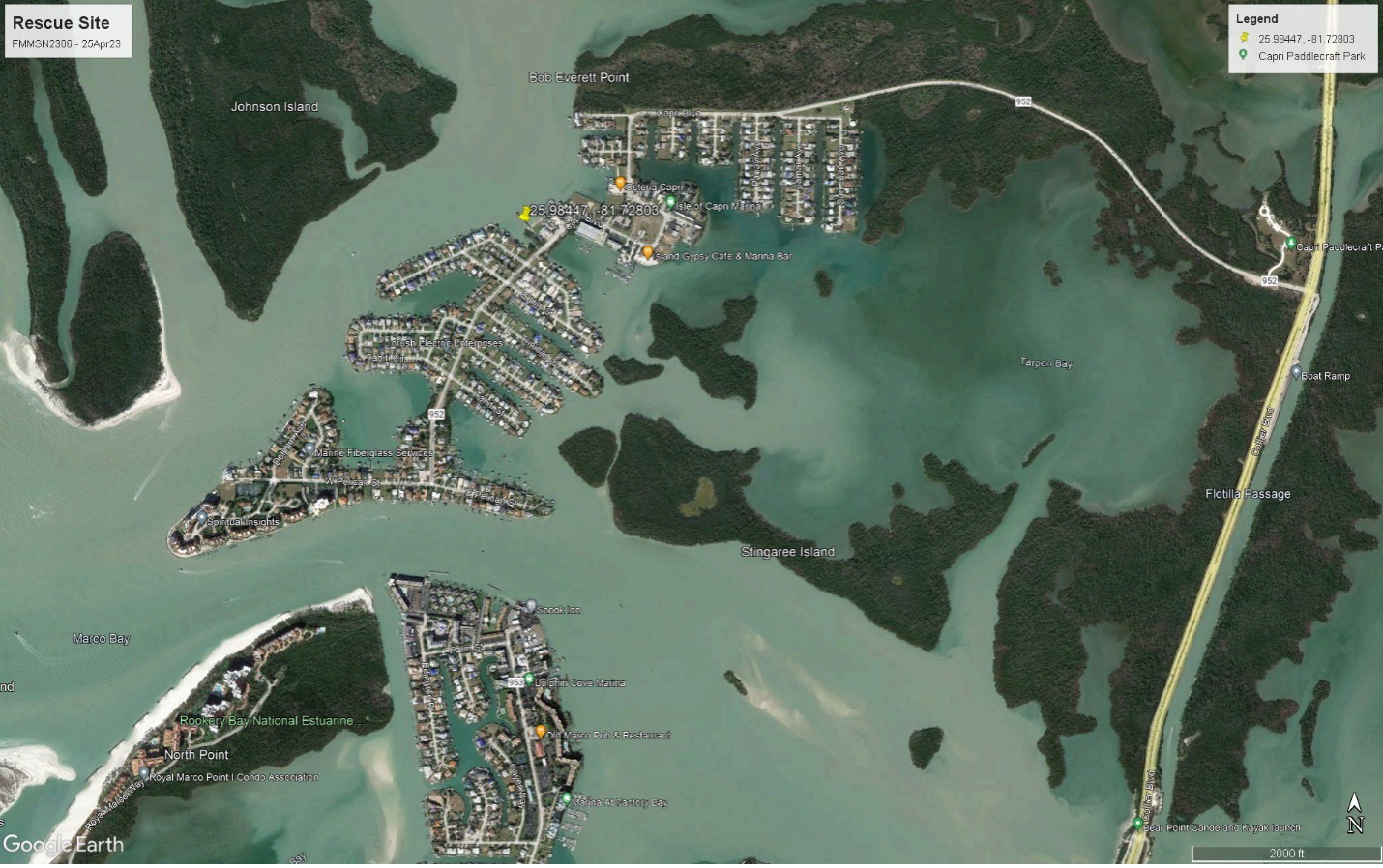
Rescue location.
